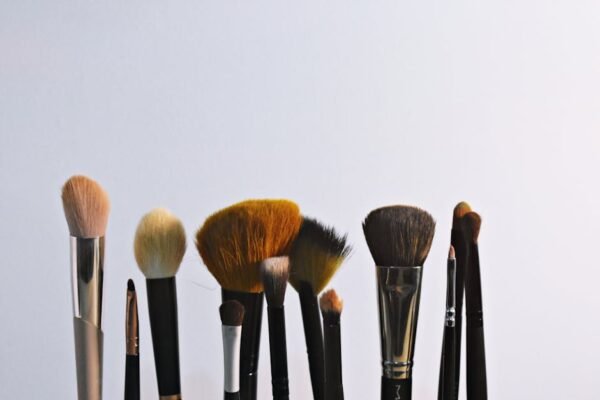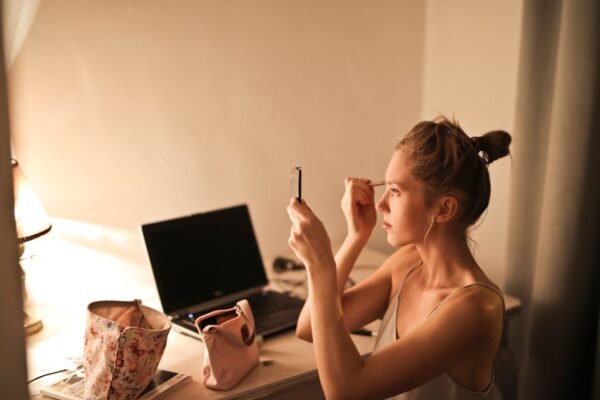Introduction to Contouring
{“type”:”img1″,”src”:”https://facehubs.com/wp-content/uploads/2024/03/fileUpload-18.jpg”,”alt”:”makeup tools on a table”}Contouring is an essential part of makeup that enhances your natural features by defining the face. This technique can highlight your best features while also minimizing those you might want to conceal. Understanding contouring is crucial because it varies significantly with each face shape.
Throughout this guide, we'll explore how to identify your face shape and apply contouring techniques specifically designed for it. Whether you have an oval, round, square, heart, or diamond-shaped face, mastering these methods will elevate your makeup game.
For beginners, contouring can seem daunting, but it's all about practice and knowing the right places to apply your products. Common tools for contouring include contour sticks, powders, and creams, which can all yield beautiful results when used correctly.
The magic of contouring lies in its ability to sculpt your face subtly or dramatically, depending on your preference. With the right techniques, you can enhance your natural beauty and feel more confident in your skin.
Remember, the most important aspect of makeup is to have fun and experiment. Let's dive into the world of contouring and discover how to make it work for your unique face shape.
The Basics of Contouring
Before we jump into specific techniques for each face shape, let's establish some contouring fundamentals. Understanding where to contour on your face is key. Typically, you want to apply contour along the sides of your nose, beneath your cheekbones, along your jawline, and on the top of your forehead near your hairline.
Highlighting complements contouring by illuminating areas of the face where light naturally hits. These areas include the bridge of the nose, the brow bones, the tops of the cheeks, and the cupid's bow. The interplay between light and shadow is what gives contouring its transformative power.
Choosing the right shade for contouring is essential. For the most natural look, opt for a contour product two shades darker than your skin tone. The key is to blend thoroughly to avoid any harsh lines, creating a seamless transition between your contour and natural skin tone.
It's also important to consider the form of contour product you're comfortable with. Powders offer a more matte finish, while creams provide a dewy look. Sticks are great for precision but require blending skills. Experiment with different types to see what works best for you.
Practice makes perfect with contouring. Don't be discouraged if your first attempts aren't flawless. Over time, you'll discover the most flattering ways to contour your face and enhance your natural beauty.
Oval Faces
{“type”:”img1″,”src”:”https://facehubs.com/wp-content/uploads/2024/03/fileUpload-23.jpg”,”alt”:”woman applying contour makeup”}Individuals with oval face shapes are fortunate in that most contouring techniques work well for them. The goal here is to emphasize this shape's natural balance. A light contour under the cheekbones, along the temples, and a subtle sweep under the jawline can enhance an oval face's natural elegance.
Oval-faced individuals should focus on subtle enhancements rather than dramatic changes. Using a light hand to apply contour and blend thoroughly ensures a natural, flattering look.
Highlighting the high points of the face, such as the cheekbones and brow bones, can create a radiant, lifted appearance. This technique complements the contouring by accentuating the face's symmetry and balance.
Regarding specific products, oval faces can experiment with both cream and powder contours. The key is blending well and selecting shades that complement your natural skin tone.
Remember, the goal of contouring for an oval face is to enhance, not alter. Keep your applications light and strategic to maintain the natural beauty of your face shape.
Round Faces
For those with round faces, the aim of contouring is to elongate the face and create the illusion of structure. Contouring the sides of your forehead and along your jawline can help achieve a more angular look. Applying contour beneath your cheekbones can also sculpt your face, providing definition.
Highlighting plays a crucial role in contouring round faces. By emphasizing the center of your forehead, under your eyes, and your chin, you can make your face appear longer and more sculpted.
It's vital for individuals with round faces to focus on blending their contour properly. Harsh lines can accentuate roundness instead of providing structure. Utilize a blending brush or sponge to ensure a smooth, natural finish.
Choosing the right contour product is also essential. Powder contours can offer a more matte, structured look, ideal for round faces aiming for definition.
Through practiced application and blending, those with round faces can master contouring techniques that celebrate and enhance their natural shape.
Square Faces
Square faces feature a strong jawline and broad forehead. The contouring goal for this face shape is to soften the angles and make the face appear slightly more oval. Applying contour along the jawline and the temples can reduce sharpness, while still honoring the face's natural structure.
For square faces, highlighting can accentuate the center of the face and draw attention away from the angles. Focusing the highlighter on the eyes, middle of the forehead, and chin can create a more rounded appearance.
Blending is, once again, paramount. The effectiveness of contouring relies on how well the product merges with your natural skin. Take time to blend thoroughly, especially around the jawline and temples, to avoid a stark contrast.
Considering the choice of product, creams may offer square faces a subtler, more blendable option than powders, allowing for gentler contouring that softens rather than sharpens.
With the right techniques, square-faced individuals can gracefully balance their natural angles, embracing a softer, yet structured, beauty.





